The design and content of SERP can significantly influence user search experience and click behavior. Therefore, understanding and optimizing SERP is of great importance for SEO (Search Engine Optimization) and SEM (Search Engine Marketing).

What is SERP?
SERP stands for Search Engine Results Page. It refers to the page that search engines (such as Google, Bing, Baidu, etc.) return after a user inputs a query, containing relevant webpage links, images, videos, and other search results.
Main features of SERP
- Relevance: The results displayed on SERP are usually highly relevant to the user’s query.
- Ranking: Results are ordered based on certain algorithms, with those at the top generally favored by the search engine.
- Diversity: Modern SERPs may include various forms of content such as images, videos, news, maps, and shopping results, in addition to traditional webpage links.
- Personalization: Search engines may personalize results based on user search history, geographic location, and other information.
- Advertisements: In some cases, SERPs display paid ads, which are usually marked as such.
Types of SERP Results
Different types of search results can enhance user experience and help users quickly find the information they need. Search engines continually optimize algorithms to provide more accurate and personalized search results.
Organic Results
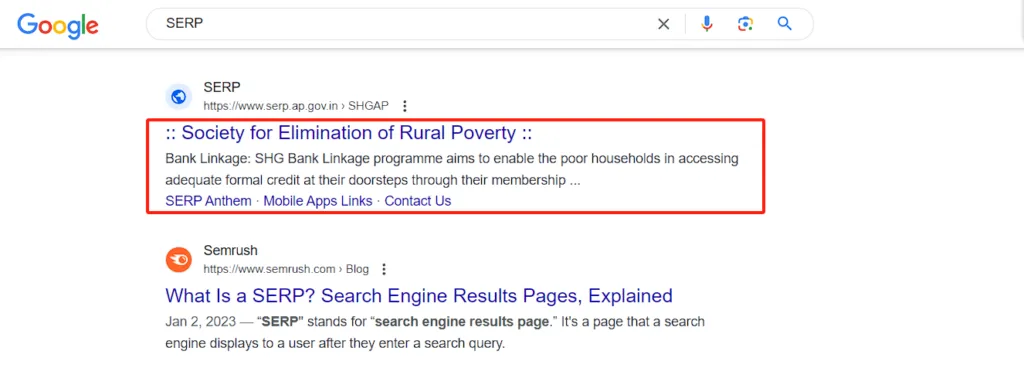
These are naturally ranked results based on search engine algorithms and typically appear in the main part of the page. They do not require payment for placement.
Paid Ads

These are results shown after advertisers bid and pay for placement, typically appearing at the top or bottom of the search results, sometimes on the side. Common ad types include Google Ads.
Featured Snippets
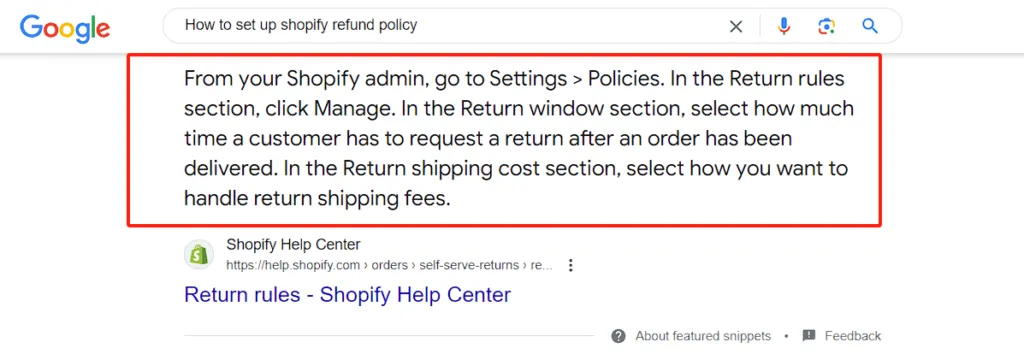
Also known as “position zero”, these appear above the organic results and provide a summary answer directly addressing the user’s query.
Local Results
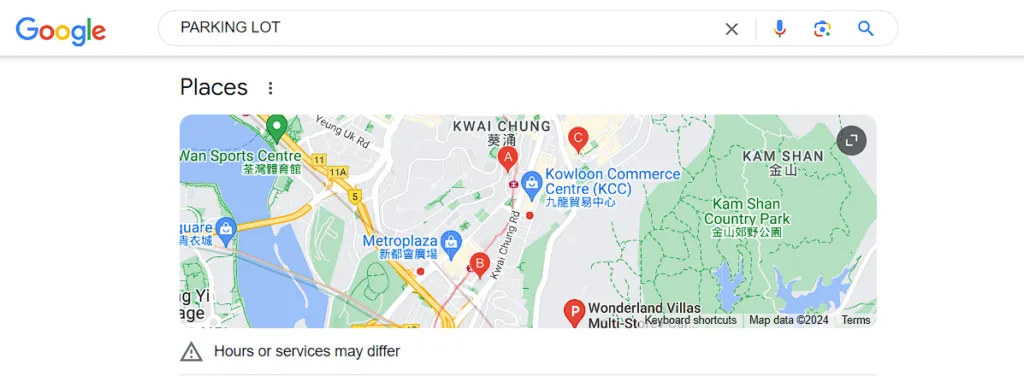
These are results for queries specific to a geographic location, often displayed within a map box listing local businesses.
Image, Video, News, and Other Vertical Results
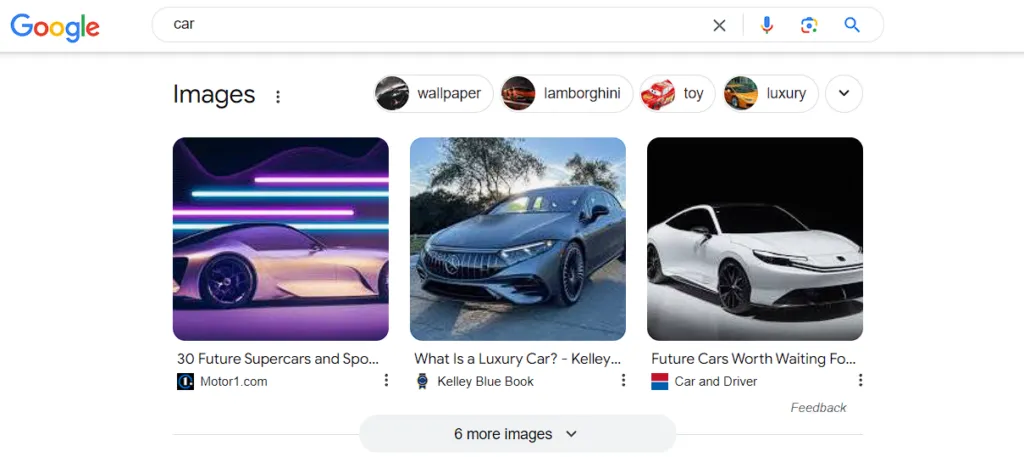
These results come from specific content types such as image search, video search, news articles, etc.
Knowledge Graph
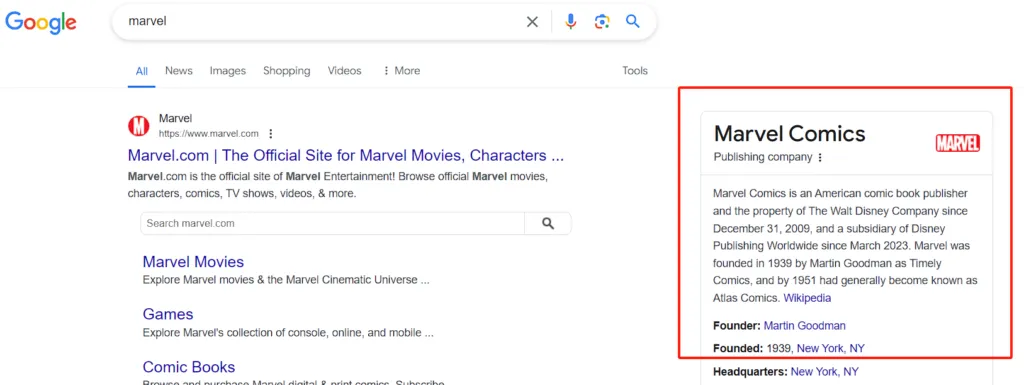
An information box displayed on the side or top of the page providing detailed information and related content about the query topic.
SERP Optimization in Digital Marketing
For website owners and digital marketers, optimizing the website to achieve higher rankings on SERPs is crucial because it can increase visibility and traffic.
Benefits of Using SERP in Digital Marketing
Utilizing SERP can bring significant benefits to digital marketing by improving visibility, attracting target audiences, enhancing brand image, and increasing conversion rates, achieving better marketing results.
Here are some main advantages:
- Increase Website Traffic: Appearing at the top or near the top of the SERP can significantly increase the click-through rate and site visits, attracting more potential customers.
- Boost Brand Awareness: Prominent positions on the SERP enhance brand visibility, making more users aware of and remember your brand, and attracting more potential customers.
- Enhance Trust and Authority: Ranking high in organic search results, especially through featured snippets or knowledge graphs, can increase the brand's trust and authority in users' minds.
- Precise Targeting: Searchers show interest through their queries, so SERP optimization can attract target audiences more likely to convert.
- Competitive Advantage: Achieving top positions on the SERP can surpass competitors, gaining more market share and customer resources.
- Improve Conversion Rates: Higher visibility and trust generally lead to higher conversion rates, with more visitors turning into actual customers or users.
- Local Search Optimization: For businesses with physical stores, local search optimization (such as Google My Business) can attract more local customers and increase in-store traffic.
- Utilize SERP Features: Utilizing SERP features like featured snippets, knowledge graphs, and video results can provide a richer user experience and potentially increase click-through rates.
- Ad Revenue: Through SEM (Search Engine Marketing) and paid ads, quick exposure and traffic can be achieved on search result pages, bringing immediate revenue.
- Long-term Benefits: Good SEO practices can bring long-term ranking advantages, not just short-term traffic boosts.
- Data Analysis and Optimization: Analyzing SERP performance provides data on user behavior and market trends, helping to formulate and optimize digital marketing strategies.
How to Optimize Your Digital Content for SERP?
Optimizing your digital content for SERP is a complex but crucial task as it can significantly improve your website traffic, brand awareness, and conversion rates.
Here are some key steps and strategies:
1. Keyword Research

- Use Tools: Utilize tools like Google Keyword Planner, Ahrefs, and SEMrush for keyword research.
- Long-tail Keywords: Optimize for long-tail keywords that have lower search volume but also less competition and higher conversion rates.
2. High-Quality Content
- Originality: Ensure content is original and in-depth, providing genuinely valuable information.
- User Needs: Create content based on user search intent, answering their questions or meeting their needs.
- Content-Length: Longer content typically performs better in search engines, provided the quality is high.
3. Optimize Page Elements
- Title Tags: Include primary keywords, and keep titles concise and attractive.
- Meta Descriptions: Although Meta descriptions don't directly impact ranking, good descriptions can increase click-through rates.
- URL Structure: Use clean, descriptive URLs that include keywords.
4. Internal and External Linking

- Internal Links: Enhance site navigation and user experience through internal linking, and distributing page authority.
- External Links: Obtain high-quality external links to improve site authority and credibility.
5. Multimedia Content
- Images and Videos: Use high-quality images and videos, optimizing their Alt attributes and descriptions.
- Charts and Infographics: Increase content readability and appeal with charts and infographics.
6. Page Load Speed
- Compress Images: Use tools to compress images and reduce load time.
- Enable Caching: Use browser and server-side caching.
- Minimize Code: Compress and combine CSS, and JavaScript files.
7. Mobile Optimization
- Responsive Design: Ensure the website displays well on all devices.
- Mobile-Friendly Testing: Use Google’s mobile-friendly test tools to check mobile optimization.
8. User Experience (UX)
- Ease of Use: Simplify navigation, ensuring users can easily find what they need.
- Readability: Use clear fonts, appropriate line spacing, and paragraph separation.
9. Local SEO

- Google My Business: Create and optimize Google My Business pages, ensuring accurate information.
- Local Keywords: Use keywords related to geographic locations to attract local search traffic.
10. Multilingual and International SEO
- If your audience is multilingual, consider optimizing content for different languages and regions.
11. Monitoring and Analysis
- Google Analytics and Search Console: Monitor website traffic and user behavior to understand which content performs best.
- Regular Review: Regularly check and update content to ensure its relevance and accuracy.
12. Featured Snippets Optimization
- Structured Data: Use Schema.org to mark up structured data, increasing the chances of obtaining featured snippets.
- Direct Answers: Provide concise, direct answers in your content to increase the likelihood of being featured as a snippet.
The Future of SERP in Digital Marketing
The future of SERP digital marketing will be influenced by technological advancements, changes in user behavior, and improvements in search engine algorithms.
With the rise of smart voice assistants (like Siri, Google Assistant, Alexa), voice search will become more prevalent. Optimizing content for natural language queries and long-tail keywords will also become more important. Schema markup and other forms of structured data will become increasingly significant, helping search engines better understand and present content. Meanwhile, search engines like Google have already shifted to mobile-first indexing, a trend that will continue, making excellent performance on mobile devices crucial.














